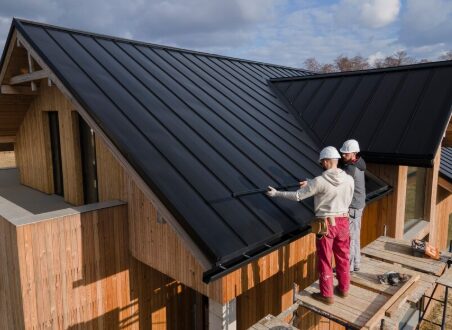Introduction
Your roof represents one of your home’s most significant investments. While materials like asphalt shingles typically last 15–25 years, and metal 40+ years, proactive care can add years—even decades—to its lifespan. Here’s how to maximize your roof’s durability while avoiding premature replacement costs.
1. Start with Quality Materials
For comprehensive roof inspections and maintenance tailored to local climate challenges, Huntsville homeowners can consult the experienced team at Huntsville Roofing Solutions, a trusted roofing company. Your roof’s longevity begins at installation:
Climate-Appropriate Choices:
In high-sun regions: Reflective coatings or metal reduce thermal stress.
Storm-prone areas: Impact-resistant shingles (Class 3/4) withstand hail.
Humid climates: Algae-resistant shingles prevent organic growth.
Avoid Cutting Corners: Bargain 3-tab shingles degrade 30–50% faster than architectural ones.
2. Installation: The Make-or-Break Factor
Even premium materials fail if installed incorrectly:
Ventilation Balance: Improper airflow causes heat/moisture buildup, rotting decking and underlayment. Aim for a 50/50 intake (soffits) and exhaust (ridge) ratio.
Flashing Precision: 90% of leaks originate at flash points (chimneys, vents, valleys). Use corrosion-resistant metal and sealed seams.
Underlayment Matters: Synthetic underlayment outperforms traditional felt, offering superior water resistance during storms.
Key Tip: Hire contractors certified by manufacturers (e.g., GAF Master Elite®, Owens Corning Platinum). This ensures warranty compliance and proven expertise.
3. Maintenance: Your Roof’s Lifeline
Bi-Annual Professional Inspections
Schedule inspections every spring and fall to catch:
Loose/missing shingles
Damaged flashing or sealant
Granule loss in gutters
Moss/algae colonization
Sagging areas
Companies like Huntsville Roofing Company offer region-specific inspection expertise.
DIY Upkeep Between Visits
Clear Debris: Leaves and branches trap moisture and accelerate decay.
Clean Gutters: Clogs cause water to pool, seeping under shingles.
Trim Overhanging Branches: Prevents abrasion and reduces debris.
Check Attic: Stains or daylight indicate leaks; musty smells signal mold.
4. Prevent Hidden Threats
Ice Dams (Cold Climates): Insulate attics to maintain consistent roof temperatures.
Wind Uplift: Secure loose shingles immediately after storms.
Pests: Seal gaps near eaves to deter rodents/birds.
Tree Damage: Remove branches within 10 feet of the roof.
5. When Repairs Can’t Wait
Address these issues immediately to avoid structural damage:
Active leaks (stains on ceilings/walls)
Multiple missing/damaged shingles (>10% of the surface)
Punctures or cracks from fallen branches
Flashing separation around penetrations
6. Signs Replacement Is Near
Even with maintenance, roofs eventually fail. Watch for:
Curling/cupping shingles
Bald spots (severe granule loss)
Frequent leaks despite repairs
Sagging rooflines
Daylight visible through decking
6. Signs Replacement Is Near
Even with maintenance, roofs eventually fail. Watch for:
Curling/cupping shingles
Bald spots (severe granule loss)
Frequent leaks despite repairs
Sagging rooflines
Daylight visible through decking
Conclusion: Protect Your Investment
Extending your roof’s lifespan hinges on three pillars: climate-smart materials, meticulous installation, and disciplined maintenance. Annual inspections and prompt repairs prevent minor issues from escalating into costly emergencies. While DIY upkeep helps, partnering with certified professionals ensures your roof delivers maximum protection for decades.
Extending your roof’s lifespan hinges on three pillars: climate-smart materials, meticulous installation, and disciplined maintenance. Annual inspections and prompt repairs prevent minor issues from escalating into costly emergencies. While DIY upkeep helps, partnering with certified professionals ensures your roof delivers maximum protection for decades.











